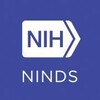
Timing of Voluntary Movement in Patients With Tourette Syndrome and Chronic Tic Disorder
Tourette SyndromeTic DisordersThis study will examine how the brain controls movement in people with Tourette syndrome and chronic tic disorder to determine if the timing of movement is important in whether someone feels "in control" of their movements. Although movements in tic disorders are often characterized as "involuntary," some patients claim that these movements are made voluntarily, or they are unable to decide if they are voluntary or involuntary. Previous experiments have shown that when people are asked to look at a clock and report the time they first decide to make a movement they report times later than the first brain waves associated with movement appear. When they are asked to report the time they first initiate the movement, they report times before the muscles actually begin to move. This study may help determine how the sense of willing and initiating an action is altered in patients with Tourette syndrome and chronic tic disorder, and how people may feel more or less "in control" of their movements. Normal volunteers and patients with Tourette syndrome or chronic tic disorder between 18 and 65 years of age may be eligible for this study. Control subjects must not have any neurological or psychological disorders, and patients with Tourette syndrome of chronic tic disorder must not have any other neurological disorders. Patients with attention deficit hyperactivity disorder (ADHD) may not enroll in this study. All participants will have a medical history, physical examination, and a test to determine their level of attention. Patients will be interviewed about their symptoms and complete psychiatric rating scales. In addition, all participants will undergo the following procedures: Electric shock Participants look at a clock on a computer screen, the hands of which revolves quickly. While looking at the clock, each participant will be given small, non-painful electric shocks and asked, according to the clock, to say when they received the shocks. The shocks are repeated 40 times. Arm movement Participants are asked to lift their arms off a table repeatedly, at random times, while they look at the computer clock. This exercise is repeated 80 times. Of these 80, participants are asked 10 times consecutively to say the time they first had the desire to move their arm, and then 10 consecutively the time they first felt that they were moving their arm. Electroencephalography (EEG) and Electromyography (EMG) Participants undergo EEG and EMG durin...

Brain Dynamics Involved in Generating Tics and Controlling Voluntary Movement
Tourette SyndromeTic DisordersThis study will use electroencephalography (EEG) and electromyography (EMG) to examine how the brain generates tics and controls voluntary movement in patients with Tourette's syndrome and chronic motor tic disorder. EEG records the electrical activity of the brain. For this test, a cap with built-in electrodes is placed on the subject's head, and the electrodes are connected to a monitor that records the brain activity. EMG records muscle activity using electrodes placed on the skin over muscles on the fingers or above the outer corner of the eyes. Healthy normal volunteers and patients with Tourette's syndrome and chronic motor tic disorder between 21 and 65 years of age may be eligible for this 2- to 3-hour study. Each candidate will be screened with a medical history, physical and neurological examinations, and a questionnaire that screens for psychiatric disorders. During EEG and EMG recordings, participants undergo the following tasks while seated comfortably in a sound-shielded room: Patients Finger task: Patients raise their index finger once every 10 seconds for about 25 minutes. Tic evaluation and mimicking: Patients allow their tics to occur as they do naturally. After each tic, they report whether the tic was voluntary and whether it was preceded by a sensation of urge. They then mimic tics that they normally have, at a rate of about once every 10 seconds. Tic suppression task: Patients suppress tics they normally have for several minutes. They then allow the tics to occur naturally, without attempting to suppress them. Normal Volunteers Finger task: Volunteers raise their index finger once every 10 seconds for about 25 minutes. Open eye task: Volunteers keep their eyes open for a minute or so, and then resume blinking as often as feels comfortable. The process is repeated several times.

A Study of Physical and Metabolic Abnormalities in HIV Infected and Uninfected Children and Youth...
HIV InfectionsHIV-Associated Lipodystrophy Syndrome5 moreThe purpose of this study is to assess the prevalence of metabolic and physical abnormalities in HIV infected (via mother-to-child transmission) and uninfected children and youth. Metabolism, body composition, bone density, and other factors will be assessed in relationship to participants' exposure to highly active antiretroviral therapy (HAART).

Mechanisms of Adaptation in Human Short Bowel Syndrome
Short Bowel SyndromeThis is an observational, natural history trial of mechanisms of gut adaptation in adult short bowel syndrome (SBS). Patients with SBS (< 200 cm small bowel ± colon) will be studied initially 2-9 months after the last small bowel resection and again exactly 6 months after the initial study. GCRC-studies will examine intestinal nutrient absorption, gut barrier functions and gut mucosal biopsy specimens for markers of nutrient transport and cell proliferation and apoptosis.

Short Term Outcomes of Children With Acute Respiratory Distress Syndrome
Acute Respiratory Distress SyndromeThe study is a chart review of all children admitted over a two year period with the diagnosis of acute respiratory distress syndrome. Short term outcomes, such as mortality, length of ventilation and length of stay, will be reviewed. Factors that impact these outcomes will also be reviewed.

Genetic Analysis of Fraser Syndrome and Fryns Syndrome
Fraser SyndromeFryns Syndrome3 moreThis study will examine blood or other tissue samples from patients with Fraser syndrome and patients with Fryns syndrome to try to identify the gene responsible for these diseases. Fraser syndrome is characterized by congenital abnormalities including cryptophthalmos (lack of eyelid formation), syndactyly (webbed fingers or toes) and abnormal genitalia. Patients may also have abnormalities of the nose, ears and larynx (voice box), cleft lip or palate, and kidney agenesis. Fryns syndrome is characterized by hernia through the diaphragm, cloudy cornea, coarse facial features, cleft lip or palate, abnormal fingers and toes, heart, kidney and brain malformations and hydrocephalus (accumulation of fluid around the brain). This protocol consists of laboratory study only; it does not involve patient care or patient counseling. Patients with Fraser syndrome or Fryns syndrome are eligible for this study. Parents and healthy siblings of patients will also be included for genetic study, and parents of children with undiagnosed multiple congenital anomalies syndromes will be included for comparison study. Participants will provide a blood sample (about 8 to 10 teaspoons from adults; 1 to 3 teaspoons from children) or sample of skin cells collected by swabbing the inner surface of the cheek. Some patients may undergo a skin biopsy, in which a small skin sample (about 1/8-inch in diameter) is surgically removed. The tissue samples will be used to obtain DNA (genetic material) for laboratory testing. A permanent cell line-a collection of cells grown in the laboratory from the original tissue specimen-will also be established to enable additional testing in the future.

Study of Usher Syndromes, Type 1 and Type 2
Retinitis PigmentosaThe purpose of this investigation is to gain additional knowledge about what causes type 1 and type 2 Usher syndrome-inherited diseases that can cause balance problems and impaired hearing and vision-and to develop better diagnostic tests. Patients with type 1 Usher syndrome usually are deaf from birth and have speech and balance problems. Patients with type 2 disease generally are hearing impaired but have no balance problems. All patients develop eye problems that cause difficulty seeing in the dark. The development of newer and more sophisticated diagnostic tests may detect subtle differences in signs and symptoms that allow more accurate distinction between the two types of Usher syndrome. This study will use these tests to classify these syndromes and eventually identify the genes responsible for them. Study participants will have a medical and family history taken and a family tree constructed. They will undergo a thorough eye examination, including special tests of color vision, field of vision, and ability to see in the dark. An electroretinogram will be done to measure the function of cells in the retina, and a procedure called fluorescein angiography will be done to look at and photograph the blood vessels in the retina. Special hearing and balance tests will also done. Hearing tests include physical examination of the ears and wearing earphones while listening to tones. Balance and coordination tests require tasks such as walking in a straight line and standing in the dark with eyes closed. A caloric stimulation test will also be done, in which a small amount of water is irrigated into the ear canal. For gene studies, blood samples will be collected from patients and all available family members.

Effects of Combined Natural Molecules on Metabolic Syndrome in Menopausal Women
MenopauseClimacteric Syndrome1 moreThe study collected retrospective data from the assumption of combined natural molecules in menopausal women with metabolic syndrome

Expanded Access Program for Tiratricol in Patients With Monocarboxylate Transporter 8 Deficiency...
Monocarboxylate Transporter 8 DeficiencyAllan-Herndon-Dudley SyndromeThe goal of this program is to provide expanded access (i.e., before marketing authorization) to tiratricol as treatment for patients with monocarboxylate transporter 8 deficiency (MCT8 deficiency, also known as Allan-Herndon-Dudley syndrome [AHDS]), who in their Treating Physician's opinion, could benefit from tiratricol and meet the eligibility criteria.

Study of a Candidate Gene Involved in Goldenhar Syndrome.
Goldenhar SyndromeOculoauriculovertebral DysplasiaThe aim of this study is to identify of the first gene involved in the Goldenhar syndrome in a cohort of 120 affected patients.
